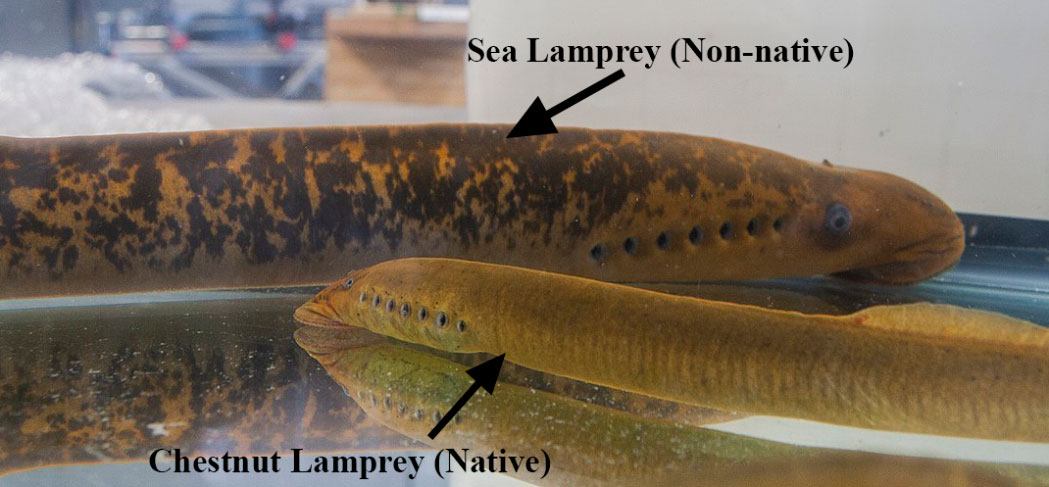Double Check Those Lamprey; Wisconsin has Native Lamprey Too
Many Wisconsin anglers are catching fish left, right, and center as we near mid-summer. But sometimes with those fish, there are reports of sea lamprey attached to fish. Even in places where the sea lamprey isn’t known to have reached, including Lake Winnebago. But anglers are often surprised to hear that Wisconsin waters play host to native lamprey. Take a minute to learn how to identify our native lamprey so next time you catch a fish with a lamprey, you’ll know if it’s native or invasive.
Native Lamprey vs. Sea Lamprey
There are four native freshwater lamprey that can be found in Wisconsin. Of these four, two are parasitic and might be on your next fish. Each species of lamprey have different physical characteristics that can help you figure the lamprey you’re seeing. Check out the chart below to see how our native species differ from the invasive sea lamprey.
If you’re looking for key characteristics to determine if you’ve caught a sea lamprey, take a look at the top fin of the lamprey. If the long fin on the back of the lamprey is split into two (two dorsal fins), there’s a good chance you’ve caught a sea lamprey.
The most common lamprey in the Winnbeago lake system is the native Chestnut Lamprey. To learn more about this native lamprey, check out this Fox-Wolf Species Spotlight article.
To learn more about the invasive sea lamprey, Fox-Wolf’s AIS Spotlight has the info you’ll need!
Photo Credit: Great Lakes Fishery Commission
Questions? Comments? Contact Chris Acy, the AIS Coordinator covering Brown, Outagamie, Fond du Lac, Calumet, and Winnebago Counties at (920) 460-3674 or chris@fwwa.org!
Follow the Fox Wolf Watershed Alliance’s Winnebago Waterways Program on our Winnebago Waterways Facebook page or @WinnWaterways on Twitter! You can also sign-up for email updates at WinnebagoWaterways.org.
Winnebago Waterways is a Fox-Wolf Watershed Alliance program. The Fox-Wolf Watershed Alliance is an independent nonprofit organization that identifies and advocates effective policies and actions that protect, restore, and sustain water resources in the Fox-Wolf River Basin.
Check out the Keepers of the Fox Program at https://fwwa.org/watershed-recovery/lower-fox-recovery/
Reporting invasive species is a first step in containing their spread. Maintaining and restoring our waters and landscapes can reduce the impacts even when we don’t have other management options to an invasive species.


